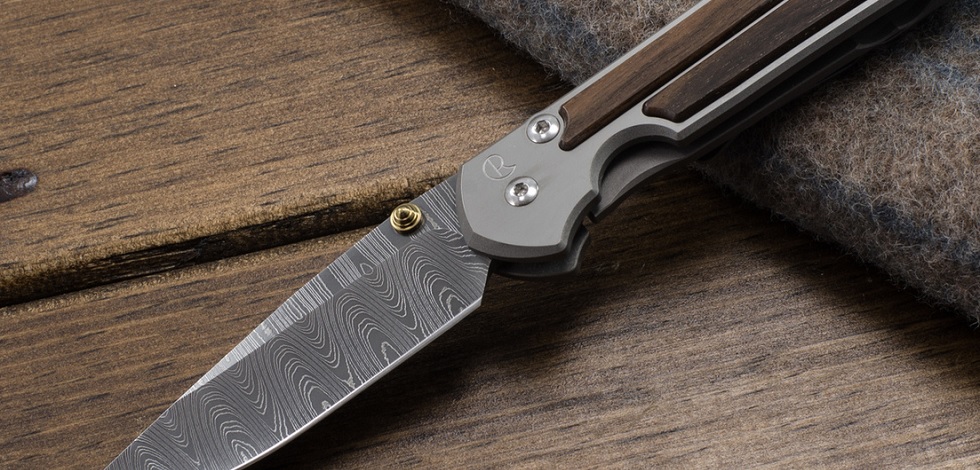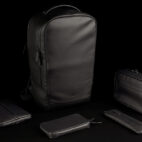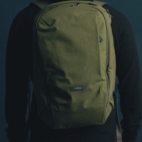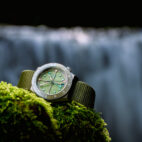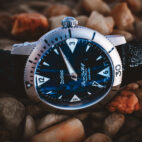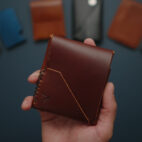9 Awesome Damascus Steel EDC Knives and Essentials
Damascus steel is a legendary material. Both in terms of its history and the reverence with which it is regarded today. Instantly recognizable for its wavy-patterned appearance, it’s well known for use in Damascus steel weapons. However, it’s also coveted by many in the knife and EDC spheres. Often in the form of beautiful knife blades for everyday, outdoor, and kitchen use. Not to mention a range of other small EDC items and even jewelry.
But what makes this almost mythical material so special? Let’s find out…
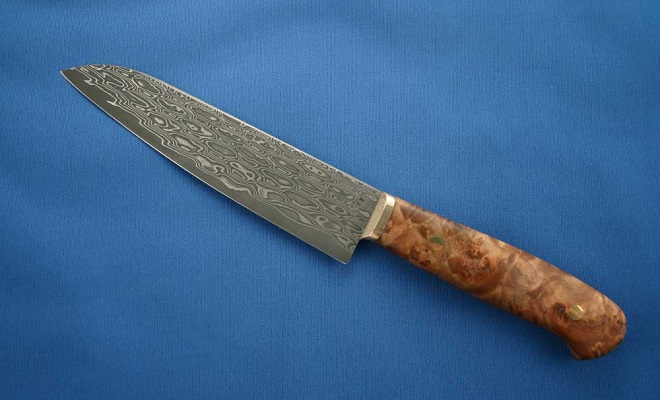
History of Damascus steel
Damascus steel has an extensive history behind it, stretching as far back as 400 CE. Blacksmiths in the Middle East used Damascus steel to create weapons renowned for their hardness, flexibility, and excellent edge retention.
While there is no definitive origin of the name ‘Damascus steel’, some suggest it refers to steel that was made, bought, or traded in Damascus, Syria. Some also suggest the name comes from the steel pattern resembling damask fabric. Damascus steel is also known as Persian watered steel (due to the wavy water-like pattern), and some of the finest Damascus steel blades were made in Persia (roughly modern-day Iran).
Damascus steel was created from imported wootz blocks. Wootz was a special kind of crucible steel made in India over two millennia ago. However, it was from around the 3rd and 4th century that items and weapons made from wootz gained popularity as they were traded and sold in Damascus. Wootz offered excellent malleability when heated, but once cooled, it became exceedingly tough. Strong but not brittle, wootz allowed blacksmiths to forge weapons far superior to those made of iron. It is believed wootz involved combining iron, steel, and charcoal in environments with no or very little oxygen. It was likely processed at high temperatures over several days, absorbing high levels of carbon from the charcoal, before being allowed to slowly cool to room temperature and resulting in a crystalline material featuring carbide.
Forging Damascus steel blades using wootz was likely done at lower temperatures before the shaped blades were reheated and then quickly cooled. Historically, Damascus steel blades have been associated with quenching in “dragon blood” and many believed that the quenching process instilled magical properties in the blades. While it’s not certain how the blades were quenched, this process could have contributed to the remarkable properties of Damascus steel by adding additional elements such as nitrogen.
Creating Damascus steel weapons and other items required a high degree of skill and resulted in highly valued pieces. However, the traditional technique for creating wootz and Damascus steel was lost somewhere in the 1700s.
Modern-day Damascus steel
Many have tried to recreate Damascus steel. And while some have come close (including metallurgists at Stanford who created a superplastic steel with properties similar to Damascus steel), no one has unlocked the secret to the original production process.
Even though the traditional technique is lost, modern-day blacksmiths have risen to the challenge of making Damascus steel. Some of the more well-known names in the industry include Devin Thomas, Nichols Damascus, and Alabama Damascus Steel, while Swedish-based Damasteel utilizes a powder metallurgical process to create Damascus-patterned steel.
While it is not created in the same way as traditional Damascus steel (and rightly or wrongly, some argue it shouldn’t be called Damascus steel), modern-day Damascus steel offers all the benefits of the original, including strength without brittleness, great edge retention, and of course the iconic wavy pattern.
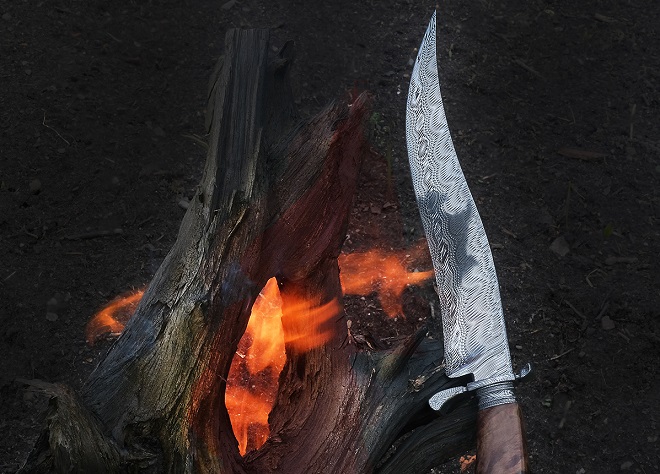
How it’s made
Most modern-day Damascus steel is usually made by welding different steel alloys together and folding them to obtain a desired pattern. The end product will differ in aesthetics and properties depending on which alloys are used and how they are heated and forged.
Layers of iron and steel alloys are hammered together at high temperatures to bond them. Forging the various layers together creates the wavy pattern throughout the metal. The metal is acid etched to reveal the pattern formed from the different types of steel.
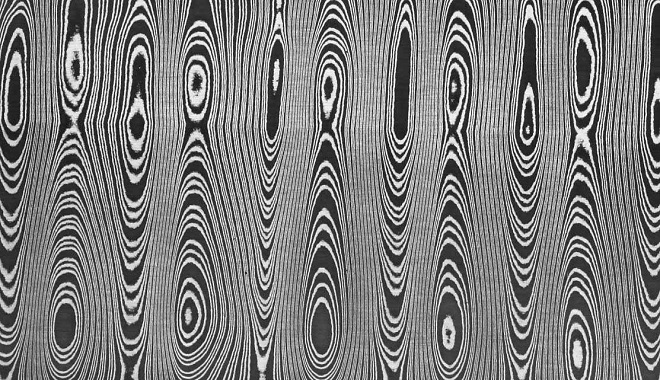
However, it’s important to note that some blades will have a Damascus pattern etched on the surface only. This pattern doesn’t run all the way through the metal, and can eventually wear away. This is not a true Damascus steel blade and won’t perform like one. But since these types of blades are much cheaper than pattern-welded Damascus steel, they are an affordable alternative for those who want the Damascus aesthetic without the associated cost.
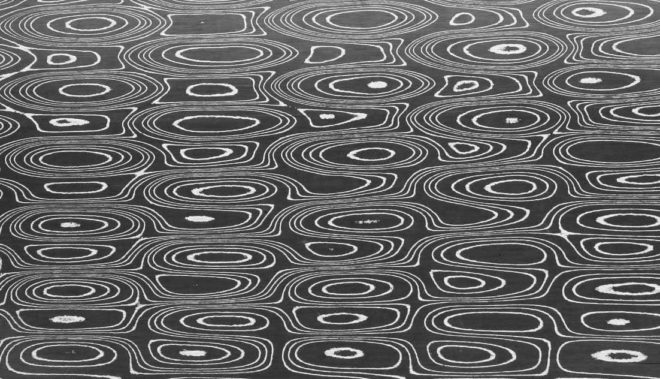
There is no uniform pattern when it comes to Damascus steel. Blacksmiths can create a wide range of patterns, resulting in distinct aesthetics that will appeal to a variety of personal tastes. The number of layers in the folded Damascus steel can also vary greatly, sometimes exceeding 300 layers. Creating Damascus steel is a time-consuming process requiring expertise, and the more complex that process, the more expensive Damascus steel items will tend to be.
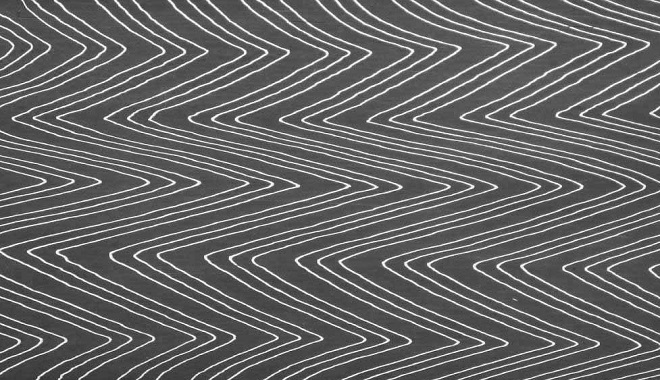
Performance
Damascus steel EDC knives are known for their edge retention. However, for the most part, they do require some maintenance such as cleaning and oiling to keep them in good condition. While historically traditional Damascus steel offered excellent performance properties compared to other alloys available at the time, it doesn’t offer the highest blade performance available on the market today. The draw of Damascus steel EDC knives is the aesthetic, the history, the production process and skill involved, and not having to sharpen them as often as many other blades.
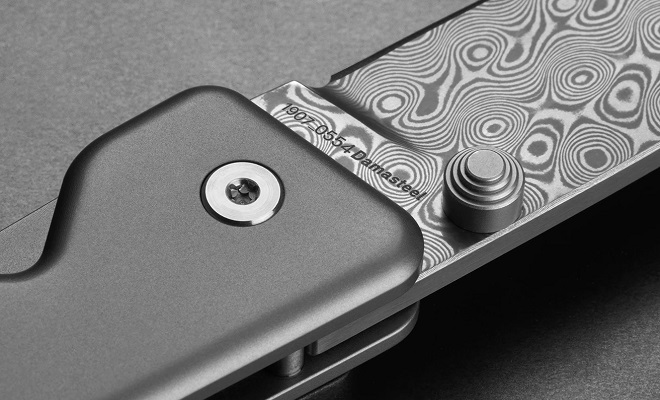
If you’re a fan of Damascus steel and keen to add its distinct aesthetic to your EDC setup, the pieces below are a great place to begin your search. Whether you’re looking for “the real deal” or simply want that awesome aesthetic, these Damascus steel EDC knives and essentials may be just right for your needs…
EDC Titanium Damascus TC4 DIY Pendant Knife Beads (US$61.10)
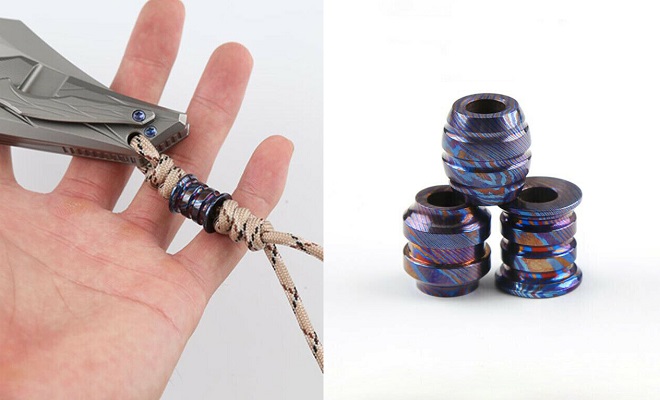
If you’re looking to add a little personality to your carry setup without breaking the bank, these titanium Damascus patterned beads might suit your style and budget. The beads are versatile for attachment to lanyards, knives, ropes, and more. And with three styles to choose from, you can opt for one or mix and match.
CIVIVI Anthropos Flipper Knife Black G10 Handle with Carbon Fiber Overlay (US$115)
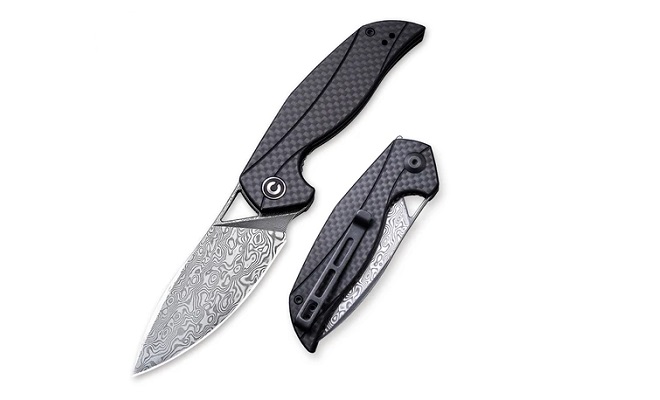
Designed by Elijah Isham, this CIVIVI Anthropos Flipper Knife is an affordable option for a Damascus patterned EDC knife. A sub-brand of WE Knife, CIVIVI offers practical, affordable knives suitable for a range of day-to-day uses. The Anthropos includes G10 handles with a carbon fiber overlay, along with a stainless steel pocket clip.
Kershaw 1870OLDAM Knockout Assisted Flipper Knife (US$124.95)
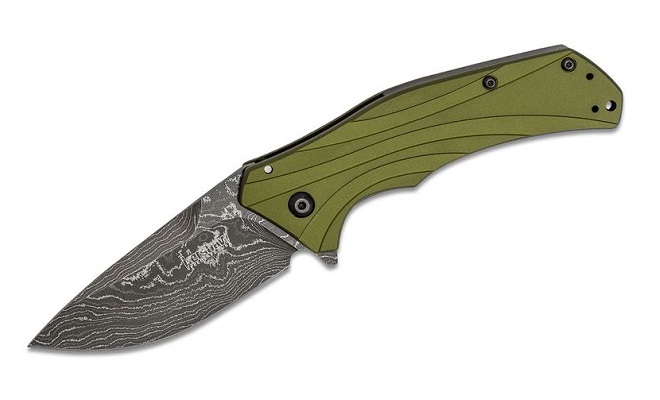
An update on the Kershaw Knockout, this knife features olive green handles and a Damascus blade. Useful features such as SpeedSafe® assisted opening, a four-position pocket clip, and a sub-frame lock enhance the user-friendly appeal of this flipper knife, making it a functional and stylish addition to your daily setup.
The Ridge Damascus (US$175)
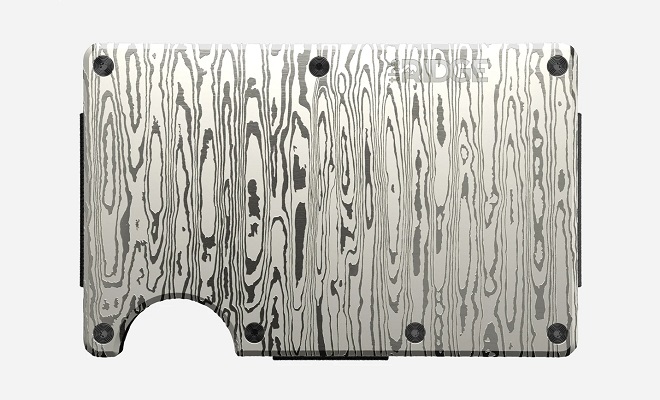
If you’re looking for that Damascus aesthetic appeal in a wallet, consider the Ridge Damascus. This RFID-blocking wallet features a laser-engraved steel pattern inspired by Damascus steel. Backed by a lifetime warranty, it’s made with 304 stainless steel and reinforced elastic and offers a sleek, minimalist means of carrying up to 12 cards and cash.
Spyderco Damascus Delica 4 (US$203)
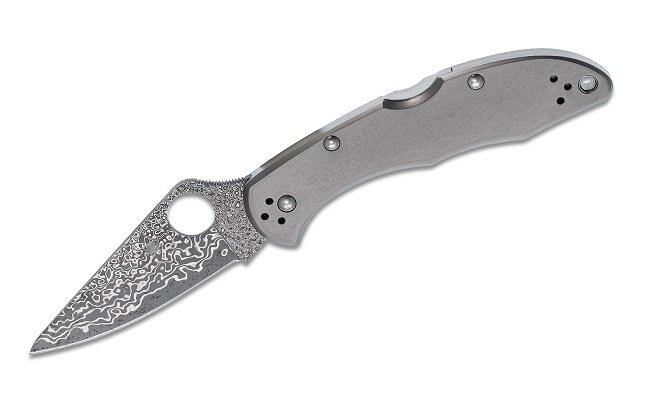
The handsome Spyderco Damascus Delica 4 features what is sometimes referred to as VG-10 Damascus. The blade has a VG-10 stainless steel core, sandwiched between layers of Damascus steel on each side. The knife also features solid titanium handle scales with a bead-blasted matte finish, as well as a four-position pocket clip.
The James Brand The Chapter – Titanium and Damasteel (US$395)
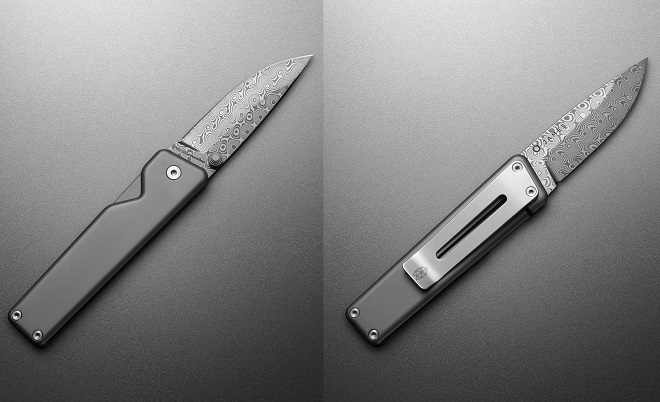
The Chapter is a suave and practical EDC knife that lends itself to a variety of uses. But if you’re looking for that extra-special touch, consider opting for the Damasteel version combining a titanium frame-lock construction with a Damasteel Rose DS93X™ blade. Designed with minimal moving parts for low maintenance, this dapper piece fits easily into a range of EDC setups.
Victorinox Hunter Pro Alox Damast Limited Edition 2020 (US$400)
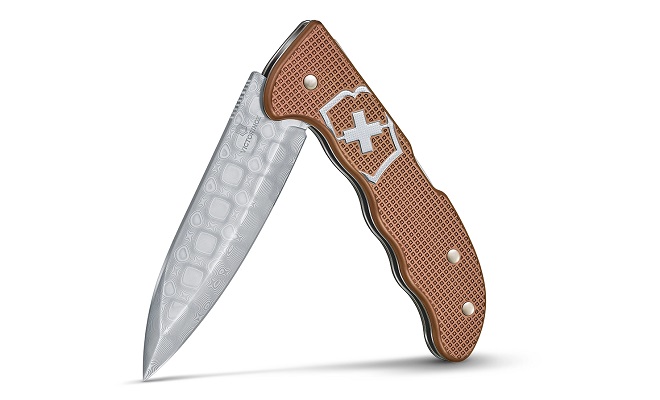
The Victorinox Hunter Pro Alox Damast Limited Edition 2020 features a specialist-crafted Damast steel blade incorporating 125 layers in a unique pyramidal pattern. Complementing the blade are high-grade Alox scales in an attractive copper colorway. Handcrafted in Switzerland, the knife is limited to 6,000 units and is an eye-catching and multifunctional collector’s piece.
Michael Zieba MS3 Damasteel (US$425)
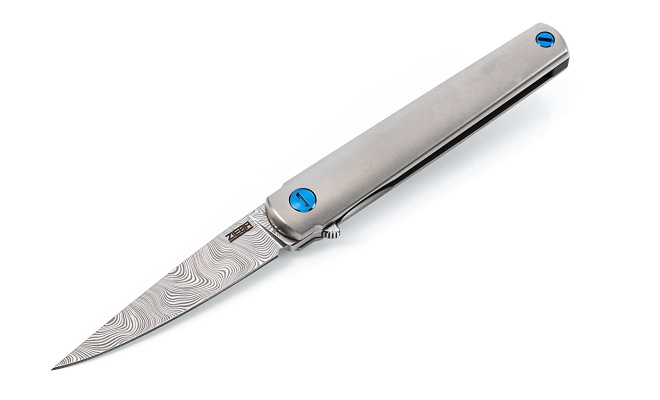
MS stands for Manhattan Special and the Michael Zieba MS3 Damasteel is certainly a special edition to any EDC setup. The striking flipper design exudes elegance and is a chic pick for those seeking a refined EDC knife for urban settings. Made in Brooklyn, New York, it features a Damasteel blade available in various patterns. The Damasteel is a powdered stainless Damascus requiring minimal maintenance. The blade is paired with blue anodized hardware, titanium handles, and a pocket clip.
Chris Reeve Small Sebenza 21 with Devin Thomas Damascus (US$675)
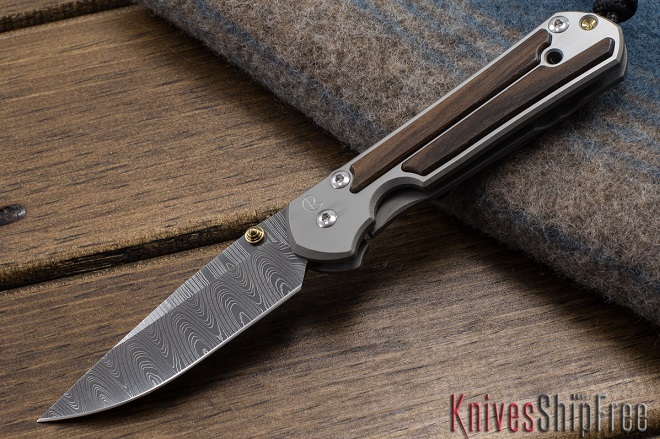
Chris Reeve is one of the most respected names in the knife world. And this Damascus twist on the ever-popular Sebenza 21 (celebrating the 21st anniversary of the original Sebenza) expertly fuses a pocket knife icon with stunning materials, excellent craftsmanship, and everyday multifunctionality. The knife features a Devin Thomas stainless Damascus steel blade in a ladder pattern and a Macassar Ebony inlay on the handle. If you’re searching for undeniably classy Damascus steel EDC knives that embrace a variety of EDC uses, you won’t be disappointed with this piece.





 Carry Awards
Carry Awards Insights
Insights Liking
Liking Projects
Projects Interviews
Interviews
